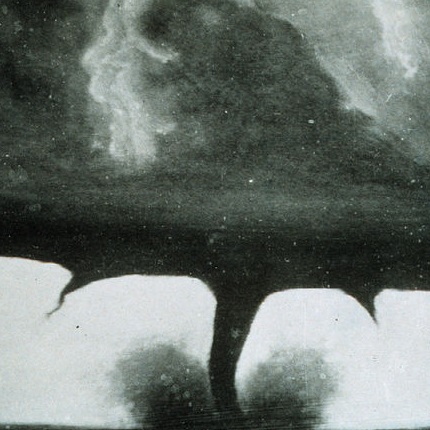General Tornado Facts
If you're looking for basic tornado facts and information then you've come to the right place. This section of our website contains general tornado facts that are perfect for students, teachers or people just looking to learn more about these violent weather events.
We recommend that you also visit our Tornado Facts homepage to find other sections of our website that might be useful for your tornado research. If you know of any facts or information that should appear below please don't hesitate to contact us, visitor input is important to us, we want this to be the most informative torando website on the internet!
- A tornado is a violent, rotating column of air that extends from the base of a thunderstorm to the earth's surface.
- Tornadoes are also known as twisters or cyclones.
- The average tornado will have a wind speed that is less than 110 miles per hour, be about 250 feet wide and only travel about 2 to 3 miles before dissipating.
- Most tornadoes have a forward speed that is less than 35 miles per hour.
- The average tornado will only last about 5 minutes on the ground before dissipating.
- The most violent and extreme tornadoes can reach wind speeds of 300+ miles per hour, be about 2 miles wide and travel well over 20 miles before dissipating. The Tri-State Tornado traveled over 200 miles and lasted for 3+ hours before dissipating.
- Tornadoes have been observed on every continent with the exception of Antarctica, with the majority of them occurring in the United States, especially in a region commonly called tornado alley.
- Pulse-Doppler radar technology can be used detect tornadoes before or as they are forming.
- Tornadoes are commonly rated using one of the two tornado scales, the Fujita scale and the Enhanced Fujita Scale.
- The Fujita scale was developed in 1971 by Tetsuya Fujita and Allen Pearson. It rates tornadoes based on wind speed and damage intensity. This tornado scale has 6 ranges, F0 thru F5, with F5 being the most violent tornadoes.
- The Enhanced Fujita Scale was developed to 2000 and 2004, it replaced the Fujita scale in 2007 in the United States and 2013 in Canada. It uses the same concept as the original Fujita scale, but with revised wind speeds and damage indicators. This tornado scale has 6 ranges, EF0 thru EF5, with EF5 being the most violent tornadoes.
- The most common appearance for a tornado is a narrow funnel that is 250 to 300 feet wide with a debris cloud near ground, however tornadoes can appear in many different sizes and shapes.
- A waterspout is a tornado that is over a body of water and are very common in the Florida Keys.
- In the U.S. there is an average of 1,200 tornadoes per year. About 80% of those tornadoes are either F0/EF0 or F1/EF1, with less than 1% of them reaching a F4/EF4 or stronger.
- The most infamous tornado in recorded history is the Tri-State Tornado, which devastated communities in Illinois, Indiana and Missouri.
- The deadliest tornado in the world's history occurred outside of the United States in Bangladesh on April 26th, 1989. It is called the Daultipur-Salturia Tornado and killed over 1,300 people.
- The United States began keeping official records about tornadoes in 1950. Tornadoes pre-1950 were retroactively assigned a Fujita scale rating.
- In the United States the month of May has historically the most active month for tornadoes.
- No direct measurement of wind speeds has ever been made in the eye of a tornado. This is because no instrument that can measure wind can survive long enough inside the eye!
- The Super Outbreak in 1974 holds the record for the most produced F5 tornadoes; seven F5 tornadoes.
- Cordell, KS is proof that tornadoes can strike the same area twice, debunking a popular tornado myth. Cordell, KS was hit by tornadoes three years in a row, on the same day; May 20th!
 We hope you found these general tornado facts and information useful. We recommend that you head over to our
Tornado Facts homepage and see if any other sections of our
website could be useful to your research into these violent weather events. No tornado research is complete
if you haven't learned about the infamous Tri-State Tornado,
which still holds the most tornado records to this day. If you think of some facts or information that should be listed above you can
contact us to let us know.
We hope you found these general tornado facts and information useful. We recommend that you head over to our
Tornado Facts homepage and see if any other sections of our
website could be useful to your research into these violent weather events. No tornado research is complete
if you haven't learned about the infamous Tri-State Tornado,
which still holds the most tornado records to this day. If you think of some facts or information that should be listed above you can
contact us to let us know.
